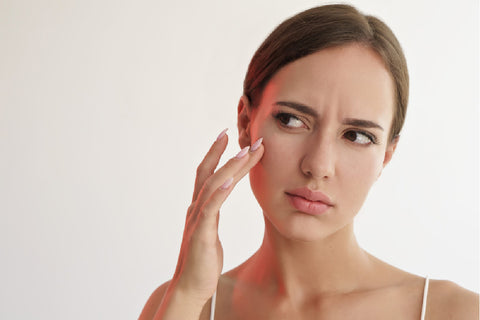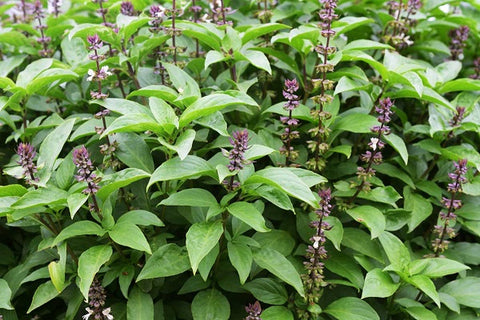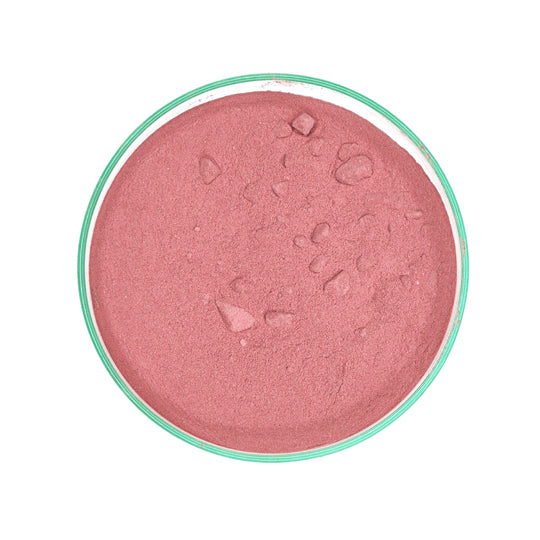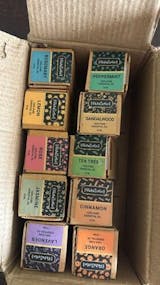Oranges are known as one of the most versatile fruits known to humankind. Apart from eating them as delectable fruits, they are also considered in modern skin care as an effective exfoliator with miraculous antimicrobial and antibacterial properties. Rich in high amounts of antioxidants and Vitamin C, the best way to include oranges in modern skincare routines is through orange peel powder.

Orange peel powder has a wide variety of benefits like moisturization, cleansing, exfoliation, and such. Orange peel powder face packs are being used nowadays to remedy a wide range of skin ailments like acne, acne scars, blemishes, dark spots, and such. This blog presents to you all you want to know about the popular orange peel powder face packs. So, read on to find out!
Orange Peel Powder Face Pack Benefits for Skin
- Moisturizing and Smoothing Skin: The antibacterial, antimicrobial and antifungal, and exfoliating properties of orange peel powder face pack, protect the skin against agents like germs, dirt, and dust, promoting youthful, radiant, moisturized, and smooth skin.
- Acne & Pimples: The orange peel powder is the latest skincare ingredient in the industry. Research indicates that the powder contains various germicidal and antimicrobial properties, which help alleviate acne, pimples, and other skin ailments by eliminating acne-causing microbes.

- Orange Peel Powder Face Pack for Skin Whitening: The antioxidants and high quantities of Vitamin C present in the orange peel powder penetrate deep into the skin layer and help in ridding the skin of dead cells, thereby promoting a healthy, youthful-looking, radiant, whitened skin.
- Orange Peel Powder Face Pack for Pigmentation: Apart from ridding the skin of dead cells and promoting a radiant glow, the orange peel powder face pack also helps reduce pigmentation, acne marks and helps in cleansing and moisturizing the skin.
- Orange Peel Face Pack for Tan Removal: Orange peel powder has highly efficient exfoliation properties, which help to scrub the top layer of the skin, penetrating deep and cleansing the skin. This helps in efficient tan removal.
Top 12 DIY Orange Peel Powder Face Packs For Different Skin
It is a well-known fact that different skin types require different kinds of skincare treatment. Here, we have discussed some recipes for dry as well as for oily skin types:
1. Orange Peel Powder Face Pack for Dry Skin

As we all know, dry skin is prone to acne scars, dark spots, and other different types of blemishes. This face pack, a combination of orange peel powder, sandalwood powder, and milk, helps soothe the skin, alleviate inflammation and nourish the skin with the richness of a varied range of vitamins and minerals.
Ingredients
- Orange Peel Powder - ½ Tablespoon
- Sandalwood Powder - ½ Tablespoon
- Milk - 1 Tablespoon
How to Apply
- Rinse your face with warm water and pat dry with a clean towel
- Apply a thick layer of the face pack to your face and neck
- Let the thick layer of the face pack cover your nose, chin, and forehead areas properly
- Leave the face pack on till it dries (preferably 15-25 minutes)
- Rinse off by gently massaging your skin in circular motions along with warm water
- Pat dry with a clean towel
2. Orange Peel Powder Face Pack for Oily Skin

Oily skin is a very difficult part of skincare to be managed, being more prone to silmenta like acne, blackheads, whiteheads, etc. However, lemon juice, honey, and orange peel powder in combination help reduce skin oiliness along with ridding the skin of impurities, thereby nourishing and supplementing the skin with essential nutrients.
Ingredients
- Orange Peel Powder - 1 Tablespoon
- Lemon Juice - 2 Teaspoons
- Honey - ½ Tablespoon
How to Apply
- Incorporate all ingredients together
- Rinse your face with warm water and pat dry with a clean towel
- Apply a thick layer of the face pack to your face and neck
- Let the thick layer of the face pack cover your nose, chin, and forehead areas properly
- Leave the face pack on till it dries (preferably 15-25 minutes)
- Rinse off by gently massaging your skin in circular motions along with cold water
- Pat dry with a clean towel
12 Homemade Orange Peel Face Packs at Home
Now that you know about the numerous miraculous benefits of orange peel powder, we present to you some tried and tested face pack recipes. So, read on!
Recipe 1: Orange Peel Powder and Besan Face Pack

Besan is a known ingredient in skincare to maintain the skin pH and remove blemishes like tanning, pigmentation, and such. When mixed with orange peel powder and used as a face pack, besan helps promote glowy, radiant skin and provide mild exfoliation.
Ingredients
- Orange Peel Powder - ½ Tablespoon
- Besan - ½ Tablespoon
- Water - 1 Tablespoon
How to Apply
- Mix the dry ingredients first
- Add water and incorporate thoroughly
- Rinse your face with warm water and pat dry with a clean towel
- Apply a thick layer of the face pack to your face and neck
- Let the thick layer of the face pack cover your nose, chin, and forehead areas properly
- Leave the face pack on till it dries (preferably 15-25 minutes)
- Rinse off by gently massaging your skin in circular motions along with warm water
- Pat dry with a clean towel
Recipe 2: Multani Mitti and Orange Peel Powder Face Pack

Multani mitti is a revered skincare ingredient in India to remove dead skin cells and promote skin brightness. Orange peel powder, known for its fabulous antimicrobial, antibacterial and antifungal properties, and richness of antioxidants and minerals, when mixed with Multani mitti, helps purify the skin by removing any impurities and gentle exfoliation.
Ingredients
- Orange Peel Powder - ½ Tablespoon
- Multani Mitti - ½ Tablespoon
- Water - 1 Tablespoon
How to Apply
- Rinse your face with warm water and pat dry with a clean towel
- Apply a thick layer of the face pack to your face and neck
- Let the thick layer of the face pack cover your nose, chin, and forehead areas properly
- Leave the face pack on till it dries (preferably 15-25 minutes)
- Rinse off by gently massaging your skin in circular motions along with warm water
- Pat dry with a clean towel
Recipe 3: Neem and Orange Peel Powder Face Pack

Having properties of effective exfoliation and nourishment along with the goodness of vitamin C, orange peel powder has been used in a varied range of skincare remedies. As a result, it is the newest ingredient in the modern skincare industry. When used in a face pack and neem powder, it helps promote skin brightness and remove dead skin cells, blackheads, and whiteheads.
Ingredients
- Orange Peel Powder - ½ Tablespoon
- Neem Powder - ½ Tablespoon
- Water - 1 Tablespoon
How to Apply
- Mix the dry ingredients first
- Add water and incorporate thoroughly
- Rinse your face with warm water and pat dry with a clean towel
- Apply a thick layer of the face pack to your face and neck
- Let the thick layer of the face pack cover your nose, chin, and forehead areas properly
- Leave the face pack on till it dries (preferably 15-25 minutes)
- Rinse off by gently massaging your skin in circular motions along with warm water
- Pat dry with a clean towel
Recipe 4: Sandalwood Powder and Orange Peel Powder Face Pack

Sandalwood is a revered, efficient, and effective ingredient in combating the early signs of aging like fine lines, wrinkles, etc. When mixed with orange peel powder and used as a face pack, it helps in rejuvenating the skin cells and promoting youthful and glowy skin.
Ingredients
- Orange Peel Powder - ½ Tablespoon Sandalwood Powder - ½ Tablespoon
- Water - 1 Tablespoon
How to Apply
- Rinse your face with warm water and pat dry with a clean towel
- Apply a thick layer of the face pack to your face and neck
- Let the thick layer of the face pack cover your nose, chin, and forehead areas properly
- Leave the face pack on till it dries (preferably 15-25 minutes)
- Rinse off by gently massaging your skin in circular motions along with warm water
- Pat dry with a clean towel
Recipe 5: Orange Peel Powder and Curd Face Pack

Containing live Lactobacillus cultures, the curd is known to have germicidal, bactericidal, and fungicidal properties. Apart from this, curd helps hydrate and nourish the skin with the high amounts of vitamins and minerals contained in it. Thus, this face pack helps in reducing skin blemishes and nourishing the skin.
Ingredients
- Orange Peel Powder - 1 Tablespoon
- Curd - 1 Tablespoon
How to Apply
- Thoroughly incorporate the ingredients together
- Rinse your face with warm water and pat dry with a clean towel
- Apply a thick layer of the face pack to your face and neck (avoid massaging the paste onto your)
- Let the thick layer of the face pack cover your nose, chin, and forehead areas properly
- Leave the face pack on till it dries (preferably 15-25 minutes)
- Rinse off by gently massaging your skin in circular motions along with warm water
- Pat dry with a clean towel
Recipe 6: Orange Peel Powder and Milk Face Pack

The lactic acid present in milk is a known skin-lightening ingredient. Apart from the lactic acid present in the milk, the various vitamins and minerals present in it nourish and supplement the skin, leaving it feeling soft and supple. This face pack cleanses, moisturizes, and rid the skin of excess sebum, all at once!
Ingredients
- Orange Peel Powder - 1 Tablespoon
- Milk - 1 Tablespoon
How to Apply
- Incorporate the ingredients thoroughly
- Rinse your face with warm water and pat dry with a clean towel
- Apply a thick layer of the face pack to your face and neck
- Let the thick layer of the face pack cover your nose, chin, and forehead areas properly
- Leave the face pack on till it dries (preferably 15-25 minutes)
- Rinse off by gently massaging your skin in circular motions along with warm water
- Pat dry with a clean towel
Recipe 7: Orange Peel Powder and Aloe Vera Face Pack

Aloe vera is a natural moisturizer, along with being an antibacterial, antimicrobial, and antifungal. In addition, both aloe vera and orange peel powder are rich in antioxidants and Vitamin C, which help purify the skin and eliminate any skin ailments like acne, pimples, redness, inflammation, and such.
Ingredients
- Orange Peel Powder - 1 Tablespoon
- Aloe Vera Gel - 1 Tablespoon
How to Apply
- Incorporate the ingredients together nicely
- Rinse your face with warm water and pat dry with a clean towel
- Apply a thick layer of the face pack to your face and neck
- Let the thick layer of the face pack cover your nose, chin, and forehead areas properly
- Leave the face pack on till it dries (preferably 15-25 minutes)
- Rinse off by gently massaging your skin in circular motions along with warm water
- Pat dry with a clean towel
Recipe 8: Orange Peel Powder and Turmeric Face Pack

The orange peel powder and turmeric face pack has been shown to help reduce inflammation, pimples and redness, and impart a natural glow to the face. The regenerative healing properties of orange peel powder can be improved significantly by adding antioxidants, essential vitamins, and mineral-rich turmeric powder.
Ingredients
- Orange Peel Powder - 1 Tablespoon
- Turmeric Powder - 1 Tablespoon
- Rosewater - 1 Tablespoon
How to Apply
- Mix the dry ingredients first
- Add rosewater and incorporate thoroughly
- Rinse your face with warm water and pat dry with a clean towel
- Apply a thick layer of the face pack to your face and neck
- Let the thick layer of the face pack cover your nose, chin and forehead areas properly
- Leave the face pack on till it dries (preferably 15-25 minutes)
- Rinse off by gently massaging your skin in circular motions along with warm water
- Pat dry with a clean towel
Recipe 9: Tulsi and Orange Peel Powder Face Pack

Tulsi has been a revered natural purifier for the skin, known since ages in India. When tulsi powder and orange peel powder are prepared into a paste and applied as a face pack, it helps remove dead cells for the face and penetrates deep into the skin, thereby helping in purifying and deep cleansing.
Ingredients
- Orange Peel Powder - ½ Tablespoon
- Tulsi Powder - ½ tablespoon
- Water - 1 Tablespoon
How to Apply
- Mix the dry ingredients together first
- Add water and incorporate thoroughly
- Rinse your face with warm water and pat dry with a clean towel
- Apply thick layer of the face pack to your face and neck
- Let the thick layer of face pack cover your nose, chin and forehead areas properly
- Leave the face pack on till it dries (preferably 15-25 minutes)
- Rinse off by gently massaging your skin in circular motions along with warm water
- Pat dry with a clean towel
Recipe 10: Orange Peel Powder and Rose Water Face Pack

Rosewater is a known and highly revered product in the skincare industry for soothing, calming, nourishing and nurturing the skin. Having calming and soothing properties, rosewater mixed with orange peel powder and used as a face pack helps alleviate inflammation and nourish the skin.
Ingredients
- Orange Peel Powder - 1 Tablespoon
- Rosewater - 1 Tablespoon
How to Apply
- Incorporate the ingredients thoroughly
- Rinse your face with warm water and pat dry with a clean towel
- Apply a thick layer of the face pack to your face and neck (avoid massaging the paste onto your)
- Let the thick layer of the face pack cover your nose, chin and forehead areas properly
- Leave the face pack on till it dries (preferably 15-25 minutes)
- Rinse off by gently massaging your skin in circular motions along with warm water
- Pat dry with a clean towel
Recipe 11: Oatmeal and Orange Peel Powder Face Pack

Being a natural and an all-organic exfoliator, oatmeal gently exfoliates the skin, scrubbing it clean by removing all dead skin cells, thereby eliminating any impurities present on the skin surface. This face pack helps in exfoliation, skin brightening and works to even out the skin tone.
Ingredients
- Orange Peel Powder - ½ Tablespoon
- Powdered Oatmeal - ½ Tablespoon
- Rosewater - 1 Tablespoon
How to Apply
- Mix the dry ingredients first
- Add rosewater and incorporate thoroughly
- Rinse your face with warm water and pat dry with a clean towel
- Apply a thick layer of the face pack to your face and neck (avoid massaging the paste onto your)
- Let the thick layer of the face pack cover your nose, chin and forehead areas properly
- Leave the face pack on till it dries (preferably 15-25 minutes)
- Rinse off by gently massaging your skin in circular motions along with warm water
- Pat dry with a clean towel
Recipe 12: Orange Peel Powder Honey Face Pack

Being an essential antiseptic and having powerful antimicrobial properties, honey slows down the ageing process by combating free radicals whilst moisturizing the skin. Thus, this face pack helps in reducing signs of ageing, moisturizing the skin and bring back a radiant glow.
Ingredients
- Orange Peel Powder - 1 Tablespoon
- Honey - 1 Tablespoon
How to Apply
- Thoroughly incorporate the ingredients
- Rinse your face with warm water and pat dry with a clean towel
- Apply a thick layer of the face pack to your face and neck (avoid massaging the paste onto your)
- Let the thick layer of the face pack cover your nose, chin and forehead areas properly
- Leave the face pack on till it dries (preferably 15-25 minutes)
- Rinse off by gently massaging your skin in circular motions along with warm water
- Pat dry with a clean towel
Frequently Asked Questions
In this section, you may find the answers to the most frequently asked questions regarding using the Orange Peel Powder Face Pack for your skin.

Q: Can we apply an orange peel face pack daily?
Ans: No, you should not use an orange peel powder face pack daily. While this face pack may not have any severe side effects, excess usage might cause rashes, skin sensitivity and excessive sebum secretion, which might aggravate acne. Therefore, it is recommended to be used once or twice a week to the maximum.
Q: Which brand of orange peel powder is best?
Ans: You can buy Vedaoils orange peel powder to form different DIY face pack Recipes to treat Acne or pimples and other skin problems, whether related to glowing skin or dark spots.
Q: Can I Use orange peel powder for hair problems?
Ans: Yes, you can use orange peel powder for hair problems as hair packs, conditioners and such.
Q: Does the orange peel face pack offer any side effects on the face?
Ans: No, orange peel powder face does not have any severe side effects, but overuse may cause excessive sebum secretion, rashes and sensitivity.
Q: Is orange peel powder edible?
Ans: No, orange peel powder is inedible due to its bitter taste.
Q: Can I Make a face pack with orange peel powder?
Ans: Yes. You can make a wide variety of face packs with orange peel powder through the recipes discussed above.
Conclusion
To conclude, orange peel powder has been shown to have innumerable miraculous properties like being a natural antimicrobial, antibacterial, antifungal, germicidal, exfoliator and such. The various skincare properties of orange peel powder are limited to combating signs of ageing and exfoliation and fighting skin ailments like acne, pimples, blemishes, and catering to all types of skin.
Researched recently as a natural remedy for all skin ailments, orange peel powder has shown great use in the modern skincare industry. And, when used correctly and efficiently, orange peel powder face pack proves to be an essential and an effective must-have in your skincare routine. So, pamper your skin by helping it gain flawlessness and try out our recipes for radiant, glowy skin!










 Sign in
Sign in Register now
Register now My Reward Points
My Reward Points











